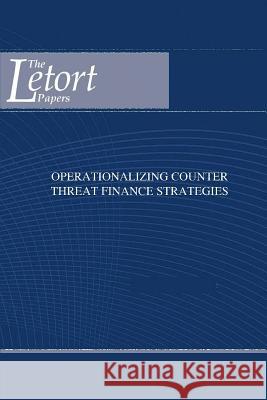Operationalizing Counter Threat Finance Strategies » książka
Operationalizing Counter Threat Finance Strategies
ISBN-13: 9781505901634 / Angielski / Miękka / 2015 / 48 str.
U.S. military leaders, planners, and decision makers face a new security environment in the 21st century, characterized by its complex networked nature, which has emerged as a result of globalization accompanied by the ever increasing speed of technological advancements. This in turn has created a new set of security dynamics that is increasingly spawning a variety of asymmetric threats, changing the very nature of conflict. The result is a complex and untidy security environment, where even attempting to define the nature of the threat has become difficult. Historically, adversaries were well-defined, allowing a relatively clear course of action to be chosen against them. This is no longer the case, as nonstate actors forming a global network of terrorist organizations, associated criminal groups, corrupt governments, and indifferent or uninformed individuals or corporations, increasingly take center stage. The state now faces an enemy whose asymmetry is such that concepts such as "civilian" and "military" or even "legality" have become obsolete. The consequence is that the traditional approach of attempting to find a solution for a particular security problem has become ineffective. In fact, it is no longer appropriate to look for a single solution as such. In the new networked world, most problems are multidimensional in nature making them difficult or impossible to solve due to their incomplete, contradictory, and constantly evolving nature. These are generally referred to as "wicked" problems, characterized by their complex interdependencies where action taken to address one aspect of the problem may reveal or create additional problems. This must be avoided at all costs. This book therefore provides recommendations for addressing a specific area where the capability of the United States and allied militaries can be augmented for the purpose of targeted action against adversaries: that of threat finance, and effective counter threat finance strategies.
Zawartość książki może nie spełniać oczekiwań – reklamacje nie obejmują treści, która mogła nie być redakcyjnie ani merytorycznie opracowana.











